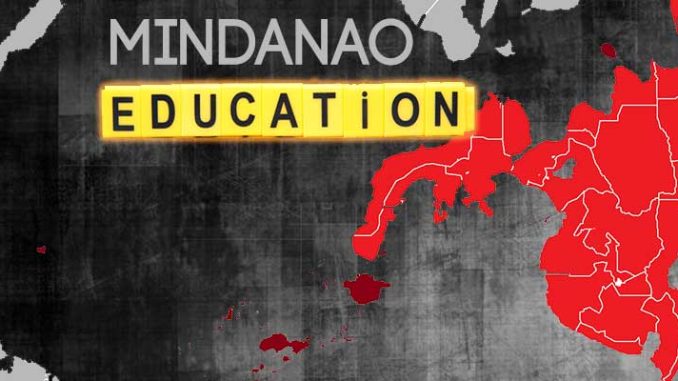
First I would like to express appreciation towards the movement within the Autonomous Region in Muslim Mindanao (ARMM) to develop a high quality and relevant basic education system, including the madrasah that will prepare students to contribute to peace and nation-building.
When I was living among Muslims in the southern Philippines, many people told me stories about when they first encountered the public school system. Parents were generally fearful that their children would be Christianized by attending school, as people initially considered public schools to be a means of conversion. For a while, girls were not allowed to continue schooling once they reached marriageable age.
This anecdote shows how national education in the Philippines has been prone to the influence of Christianity, hence fostering fear among Muslim minorities. The separatist movements were formed out of such fear and discontent, with the aim of gaining the right of autonomous government. Therefore, it is very encouraging that ARMM today has legislative powers over educational policies for its people, the power to institutionalize Islamic education within the public system.
However, some aspects should be considered when introducing religious education into the public school curriculum or integrating a religious institution like the madrasah within a public educational system. The aspects I raise are very basic, but I recommend including them for vision and direction.
Religious Education into the Public School Curriculum
Looking back over the history of nation-building in Southeast Asia, one sees that many countries have been struggling to integrate religiously diverse populations. In this process, religious education has been used as a means of national integration, both formally and informally. However, since national education and religious curricula favor majority religious groups, discontent has been fostered among minorities when public education is associated with the national identity of the religious majority. ARMM education policies can learn lessons from this experience to elaborate its strategy. Within the ARMM population, Muslims are the majority, but there are diverse minorities. I recommend that the strategy of religious curriculum and madaris in the ARMM should not be to foster exclusive nationalism. More emphasis could rather be placed on peace education – trust-building among the tri-peoples of Mindanao, understanding towards other religions, and appreciation of indigenous knowledge, for example. The educational policies of ARMM should not make non-Muslims fearful, as Muslims were made fearful by the Christian value-centered national educational system. I understand that Arabic education is taught at public schools for those students who are willing to learn. I hope that optional religious instruction for non-Muslims will also be available in ARMM schools.
Institutionalizing the Madrasah within the Public Education System
It has been pointed out that the non-accreditation of the madrasah has been deterring Muslim students from enrolling since they obtain no official certificate through graduation from a madrasah. In this sense, accreditation and institutionalization of the madrasah within the ARMM is a welcome move. However, in order to enhance incentives for Muslim children to enroll in the madrasah without anxiety, at least two things should be guaranteed.
First, the madrasah should become a channel to upward social mobility by maintaining an interface with the rest of the public educational system. The Indonesian case can serve as an example. In Indonesia, 70 percent of the curriculum of the national madaris at the secondary level consists of general education and 30 percent of religious education. In this way, graduates can proceed not only to Islamic institutions of higher education but also to non-Islamic ones (Nishino 2003: 305-309). Some madaris introduce vocational training so that students have more career options after graduation.
Second, it is important to establish Islamic institutions of higher learning in the Philippines or introduce a scholarship system for madrasah graduates to proceed to Islamic universities abroad. There are said to be two types of Islamic higher education. One consists of public and private Islamic theological schools which also teach general education courses. The other is a national university with an Islamic educational curriculum (Sugimoto 2003: 128). It is beyond my ability to suggest which type is suitable for the Philippines, but one which takes into consideration the unique position of Muslim societies there is worth searching for.
Finally, institution building for Muslim education in ARMM should not create a gap between Muslims inside ARMM and outside it. I hope the Muslim educational system within ARMM is also accessible to Muslims outside of ARMM.
Masako Ishii
Masako Ishii works at The Japan Center for Area Studies, National Museum of Ethnology. She delivered this address at the “Open Workshop on ARMM Governance Project” organized by the Japan International Cooperation Agency (JICA) in Tokyo on 22 January 2004.
Kyoto Review of Southeast Asia. Issue 5 (March 2004). Islam in Southeast Asia
References
Nishino Setsuo. “Public Education and Religion in Indonesia.” In Public Education and Religion around the World, ed. T. Ebara, 295-315. Tokyo: Toshindo, 2003. (In Japanese.)
Sugimoto Hitoshi. “Religious Education and Nationalism in Malaysia.” In Public Education and Religion around the World, ed. T Ebara, 316-339. Tokyo: Toshindo, 2003. (In Japanese)
